Don’t forget to click on the paintings!

Tintoretto’s (1518-1594) real name was Jacopo Comin or Jacopo Robusti, and he was the eldest of 21 children. His father was a dyer, or tintore, hence the nickname of Tintoretto or Little Dyer. Most of his paintings are large and narrative, characterized by muscular figures, bold gestures, and dramatic lighting; they combine aspects of two artists by whom Tintoretto was deeply influenced: Titian and his use of color and Michaelangelo and his energetic forms. He is occasionally described as a Mannerist, someone who painted idealized human
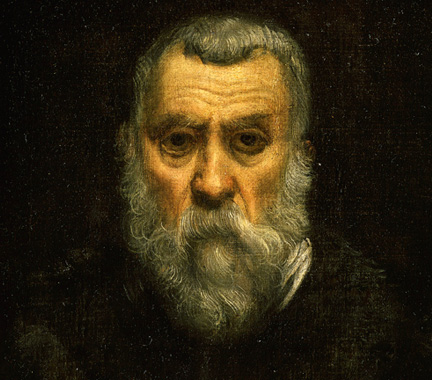
forms with urban and courtly sophistication and with dramatic use of perspective.
The family originated from Lombardy, then part of the Republic of Venice. It is thought that his father took him to Titian’s studio for training, but the style of his immature works indicate he studied with someone else. He was apparently with Titian for only ten days before he was sent him home, ostensibly because his drawings exhibited so much independence that Titian thought he would never be proper pupil.
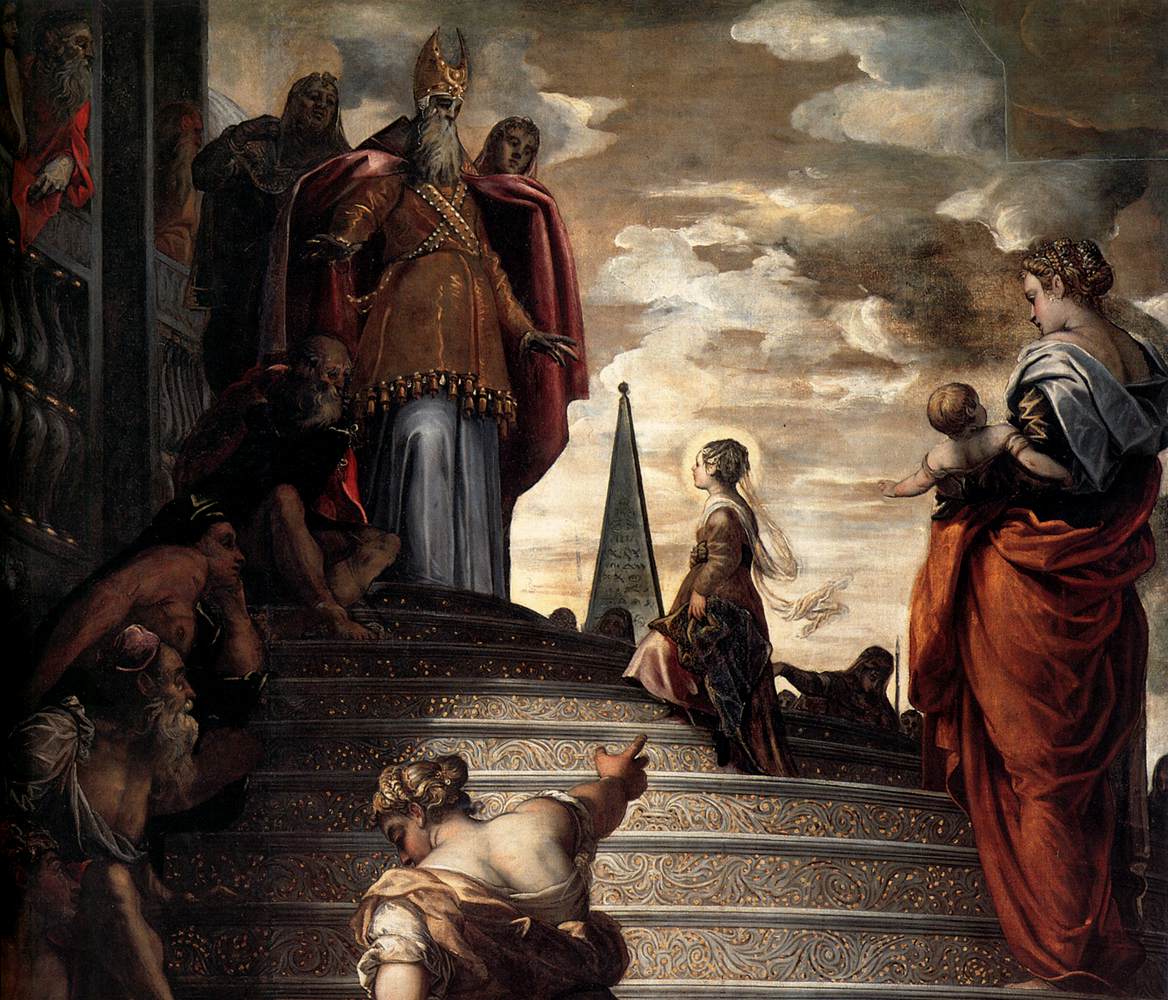
By 1539 he was working independently and spent most of his life in Venice, only leaving the city once to visit Mantua in 1580. Most of his work has survived in the churches or other buildings for which it was painted. One of his earliest works in The Presentation of the Virgin in the Temple, with lovely subdued color and notable perspective, but it is in is The Miracle of the Slave that his mature style can first be see. Note the drama of the scene and the robustness of the figures.

This is one of four pictures on the life of St. Mark commissioned for the Scuola di San Marco that established his reputation. Tintoretto made small wax models which he arranged on a stage to test the effects of light, shade and composition. This method explains the repetition in his works of the same figures seen from different angles. See the Temptation of Adam and Danaë.

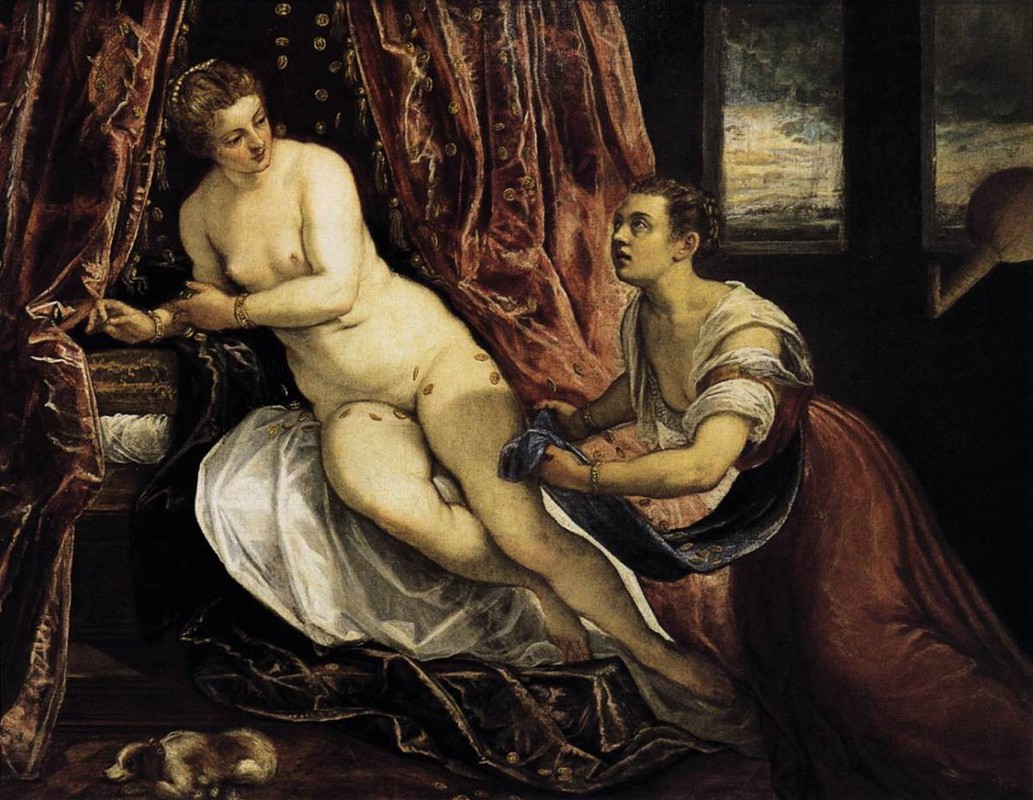
Off and on between 1565 and 1588, Tintoretto produced a large number of paintings for the walls and ceilings of the School of St. Rocco in Venice, and the school and its church contain fifty-two memorable
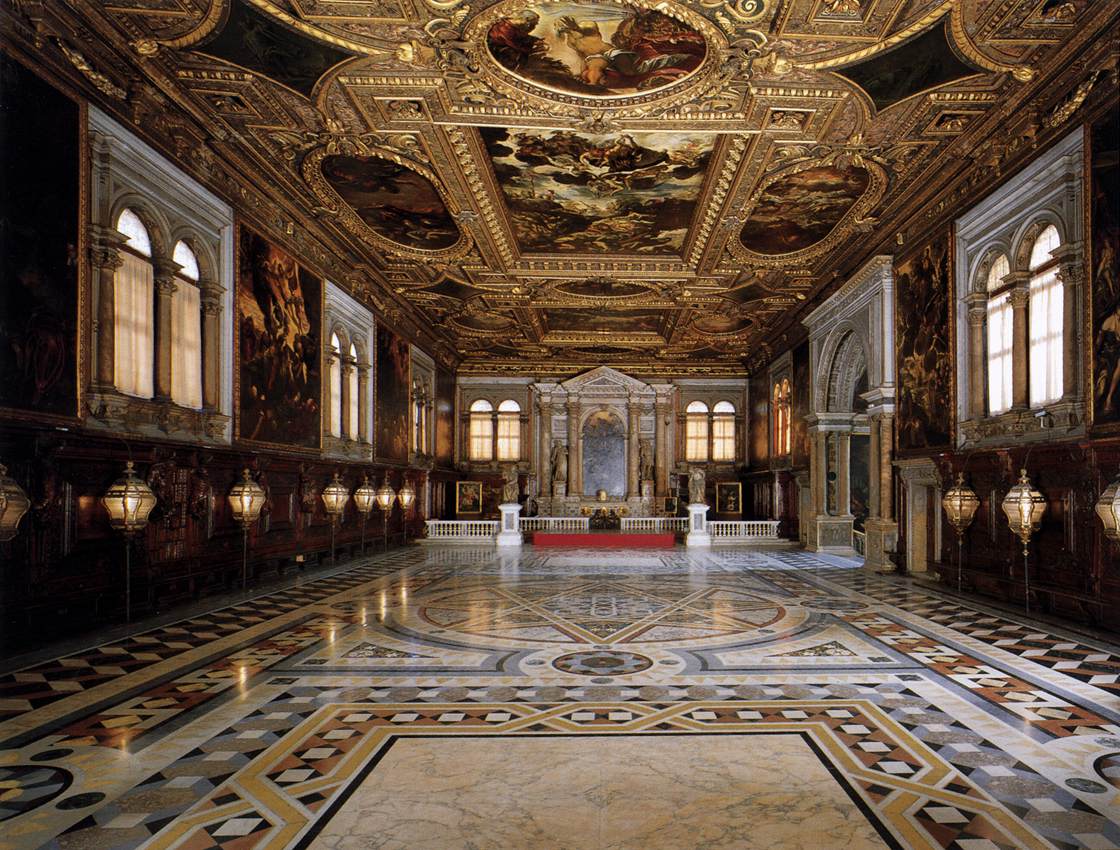
paintings. Scenes from the life of Christ adorn the upper hall (see the view of the Upper Hall) and scenes from the life of the Virgin, the lower hall. The Adoration of the Magi is one of these.
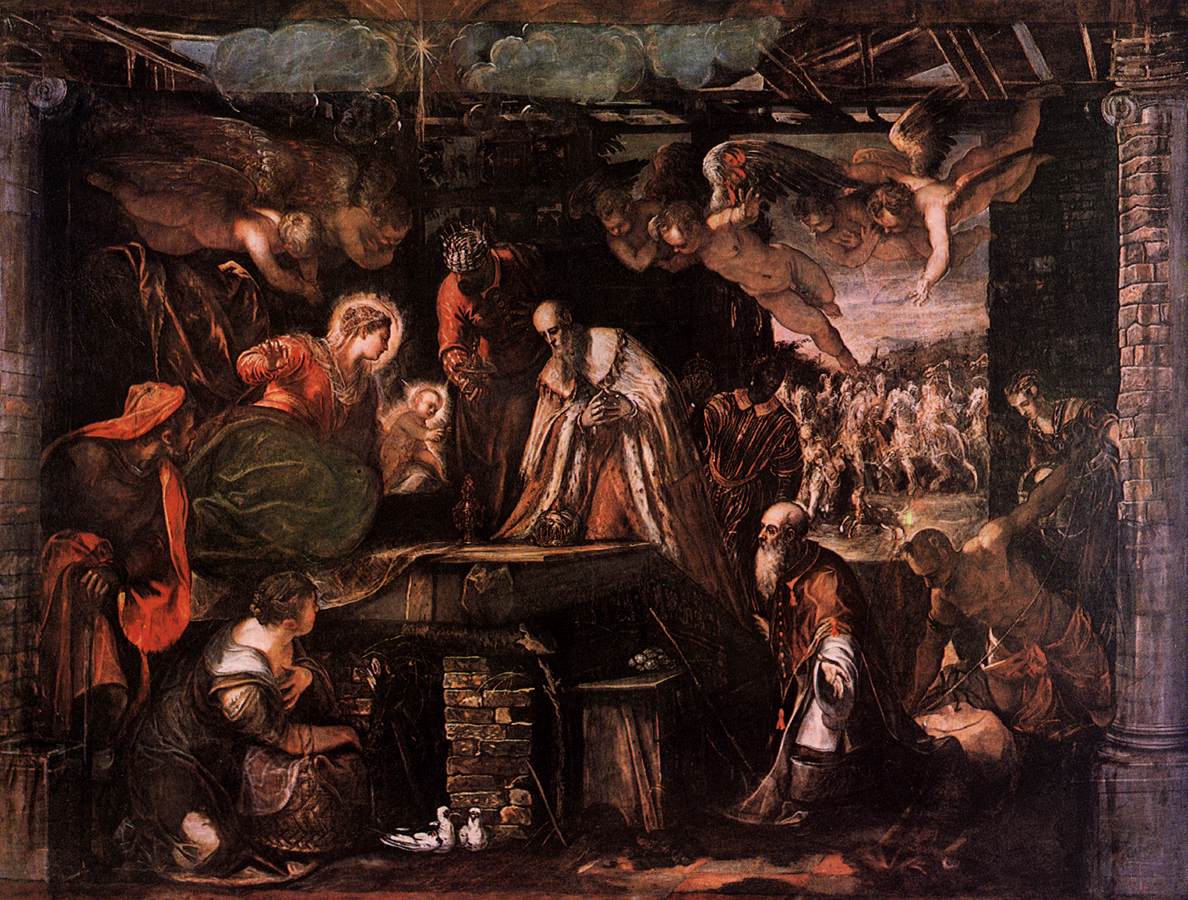
Notable as he matured is that his paintings demonstrate eccentric viewpoints, extreme foreshortening and flamboyant choreography. See the Martyrdom of Saint Paul.

After fires destroyed parts of the Doge’s Palace in 1574 and 1577, Tintoretto was one of the principal artists commissioned to renew the interior; the

Mystic Marriage of St. Catherine is one of his paintings there. For the mainhall in the Palace, he painted the gigantic Paradise, the crowning production of his life and reputed to be the largest painting ever done upon canvas (74 x 30 feet). It is colossal in scale, powerful and completely reckless of ordinary standards of the day in its method and conception.

After the completion of the Paradise Tintoretto never undertook any other work of importance. In May of 1594, he was seized with severe stomach pains and he died on May 31. He was buried in the church of the Madonna dell’Orto by the side of his daughter Marietta.
Tintoretto had very few pupils but great influence on Venetian painting; the artist who most successfully absorbed the energy and intensity of his work was El Greco.
![]()
I love his use of darkness and light.
Big difference between the early and later self-portraits. Am always intrigued by ways in which an artist sees oneself, how much of that comes from portraying the inner more than the outer self. Great art, all around.
An ambitious theme for the #atozchallenge. Congratulations. I read one of the short stories-I hope the gal got away with her runaway and lived happily ever after, but I doubt it.
Thanks for stopping by! Yup, it was ambitious, but I had such fun doing it. Loved Renaissance art as a student. I may have to so some Impressionist artists in the future.
It is interesting the lengths that artists will go to to create light on their subjects. Interesting that he used the wax figures in multiple paintings.
Interesting also that he did not use live models!
Poussin always fascinated me. He would sit and make rough sketches in pen and ink. Gets composition in head then make wax figures 5 – 7 cm tall of all the figures in the painting. Makes a box stage. Draws the base of box as a grid. On the back of the box he would do a simple water colour of what might be the backgournd. He arranges figures in the box. When he has them in the right position he cuts slits in the side of the box. Places artificial light outside and he sees where it falls in the box. Draws it as a bigger composition then makes a bigger stage. Makes new figures about 15cm and puts wet paper or taffeta on them so he can see the lights and darks. Works that to a final composition. Draws final cartoon on canvas. That to me is total dedication. I’d not have the patience for it.
Wow! That is really dedication – I can’t imagine how much work this entails,